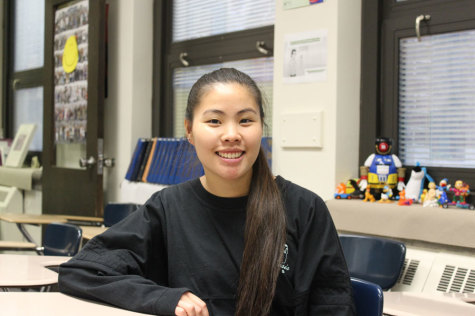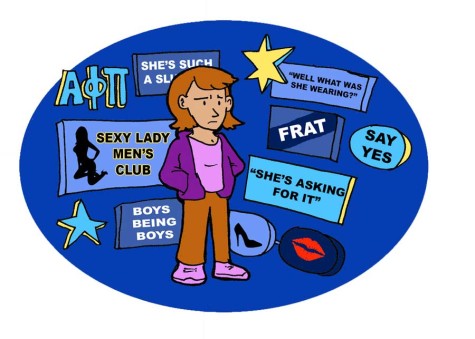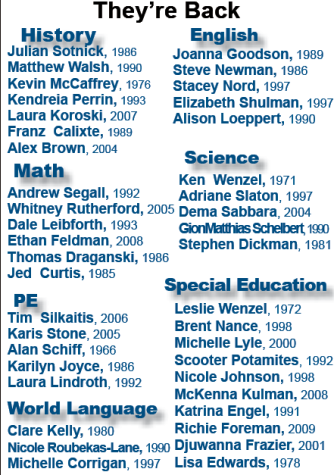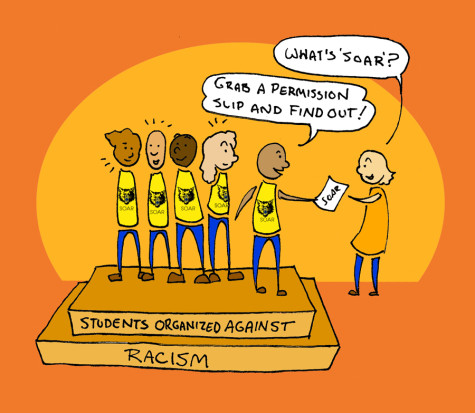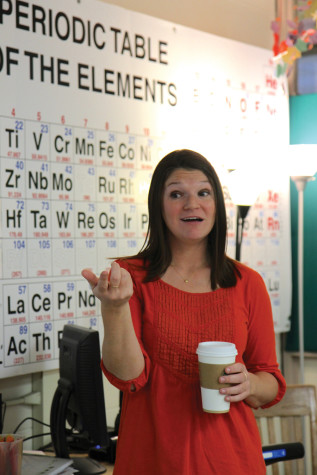Science of the body is alive at ETHS
You didn’t kill it, it was already dead.
Anatomy and Physiology dissection labs teach students the basics of the body and how it’s relevant to everyone.
Most people believe it is important to be able to understand the body.
“The dissection of mammals provides an opportunity for students to study organs and systems very similar to our own,” says Anatomy and Physiology teacher Craig Smith.
Students who take Anatomy and Physiology benefit greatly from taking the class by getting a better understanding of their body. The hands-on experience teaches the students in a way that a computer program or stimulator can’t.
“Dissecting animals is vital to understanding anatomy, and as long as these animals are treated humanely, I’m not against the process,” says Evan Carter, senior.
The course begins with basics such as learning the the layers of tissue. Students then learn the muscles, joints, bones, organs, and other structures that make humans whole.
The dissection labs have been a part of the course since the 1980s. Although the course may seem gross to some, it has helped others who may want to go into the medical field.
“My advice would be to have perseverance and patience and to be very attentive in implementing the skills and techniques that are taught,” states Smith.
Do you ever smell something really weird in the hall when walking by a classroom? You’re probably smelling the chemicals that preserves the animals. Initially, the animals are put in formaldehyde, which is then replaced by a humectant. The humectant is used to “promote flexibility and prevent mold and bacterial growth,” explains Smith.
Most students do not come into contact with these chemicals. However, in order to keep safe, all students are required to wear safety goggles, lab aprons, and gloves. The animals are purchased in the beginning of the school year and the dissections usually start early first quarter and continue throughout the year.
“They [the animals] are all purchased from well known biological supply companies,” says says Smith.
Although they are the most well known, cats are not the first animals students dissect. Students first look at worms, then rats, and then cats. Students develop the skills and techniques it takes to perform dissections before getting to the cat.
“Not only has this made me more comfortable with myself, but I understand why my body does the things it does,” says Hope Carmel, senior.
At the end of the year, anatomy students get the opportunity to go to a cadaver lab to experiment with human bodies and apply the content they’ve learned.
Smith explains that, “while some people never get used to this, we believe that there are many students who will lose their apprehension and benefit from the experience. Learning about our own bodies is relevant to us all.”
Your donation will support the student journalists of the Evanstonian. We are planning a big trip to the Journalism Educators Association conference in Nashville in November 2025, and any support will go towards making that trip a reality. Contributions will appear as a charge from SNOSite. Donations are NOT tax-deductible.


